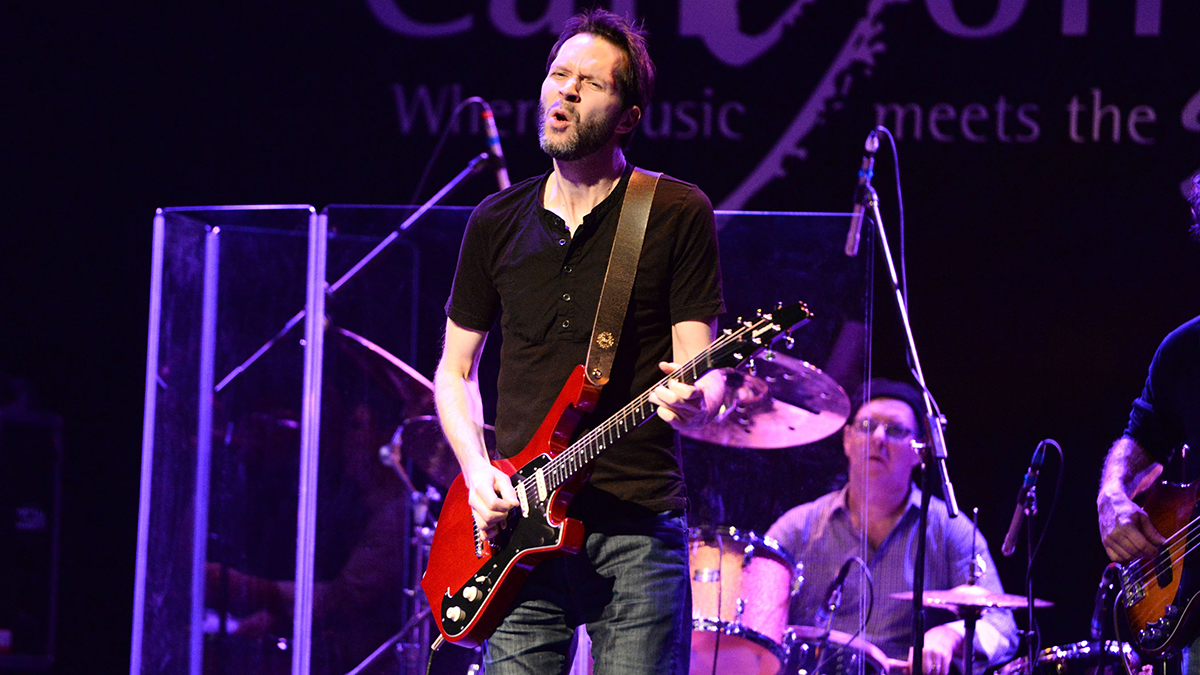
Earlier this year, Paul Gilbert announced The Dio Album – an ambitious instrumental tribute to the late Ronnie James Dio, which served to revive and reimagine tracks from across the heavy metal legend’s storied career.
For Gilbert, it proved to be an exercise in harnessing and learning new techniques – and unlearning others, in some cases – with the Mr. Big maestro having to pull out all the stops to recreate the feel and tone of several metal guitar heroes.
However, to truly capture the feel of Dio’s discography, Gilbert also had to make some choice guitar selections – and came to the conclusion that 21-fret guitars could actually help him harness higher notes than 24-fret alternatives.
It’s an argument that seemingly goes against logical thinking – more frets mean higher frettable notes, and thus even higher tones that can be hit through bends – but one that Gilbert has explained through the use of pinch harmonics.
Speaking in the new issue of Guitar World, Gilbert traced the development of The Dio Album, and revealed how he came to favor a 21-fret six-string – a 1983 Ibanez Roadstar II, to be precise – as it was “perfect for the vocal stuff”.
“I was actually worried I wouldn’t be able to play the guitar,” Gilbert said of the Roadstar, which had a higher-than-normal action. “But because of the sustain and tone it was perfect for all the vocal stuff, especially as it has only 21 frets, which gave me more access to pick harmonics.”
As for how a smaller fret count can affect a guitar’s response, Gilbert went on, “It’s funny, because I have a good portion of metal fans, a lot of them would write comments like, ‘Dude, why aren’t you using 24 frets?’
“Of course, more frets means you have access to higher notes, but in a way, you can actually get higher notes with a 21-fret guitar,” he went on, “because there are more pick harmonics you can squeeze out with your thumb and the side of your pick.”
There you have it – less truly is more. However, not only was his 21-fret Roadstar helpful in reaching higher notes, it was also crucial in allowing Gilbert to deliver particularly vocal-sounding vowel tones.
“That’s how I ended up shaping notes to sound like vowels,” he added. “When you’re copying a singer, you’re trying to make your guitar sound like lyrics: There are ‘eehs’ and ‘aahs’ and ‘oohs’. For some reason, fewer frets means you can find these harmonics much easier.”
As well as discussing his less-is-more approach to frets, Gilbert also revealed what part of The Dio Album was the most challenging: Tony Iommi’s first guitar solo from Neon Knights.
“That’s a weird chord progression,” Gilbert mused. “It’s a heavy metal song that suddenly goes all major. Funnily enough it was never one of my favorite solos.
“When I played it, I thought I’d just improvise and come up with my own thing that kept with the spirit of Tony’s lead. And I listened back thinking, ‘No, I don’t like what I’ve done.’ I had to follow Tony more closely because what he did was better.”
Visit Magazines Direct to pick up the latest copy of Guitar World, which features the full interview with Paul Gilbert.







